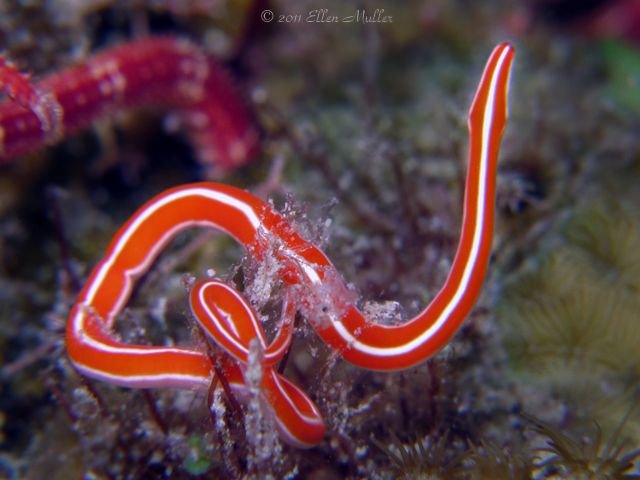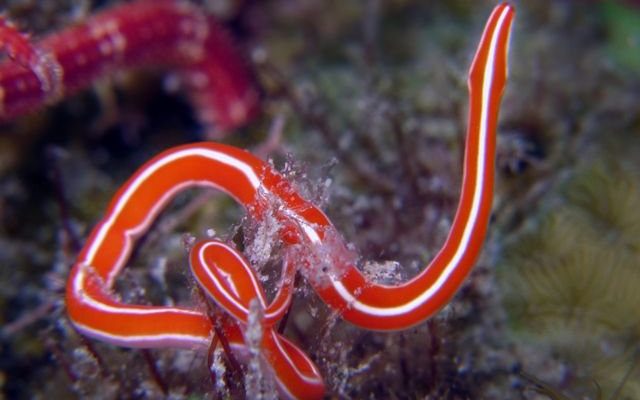
Understanding the diets of ribbon worms can give us a deeper appreciation for their role in marine ecosystems. Imagine dining at a buffet where you can choose almost anything you like; that’s how ribbon worms approach their meals. They primarily consume various prey, from tiny fish to other invertebrates. Let’s dive into what makes up their diet and how they snag their meals!
What Are Ribbon Worms?
Before we delve into what ribbon worms eat, let’s take a moment to understand what they are. Ribbon worms, or *Nemertea*, belong to a phylum that encompasses over 1,300 species. They’re known for their long, slim bodies, which can stretch several feet long. Picture a spaghetti noodle gliding elegantly through the water, and you’ll get a good sense of their shape.
These worms are fascinating for more than just their looks; they play important roles in their ecosystems. Found in diverse environments—from sandy beaches to rocky shores—ribbon worms can sometimes be hard to spot. However, if you dig a little in the sand or observe tide pools, you might very well find one!
What Do Ribbon Worms Eat?
Now, let’s get to the good stuff: ribbon worm diets! These creatures are primarily carnivorous, meaning they enjoy a meaty meal. Most ribbon worms feast on:
- Small fish: Some ribbon worms are known to take down fish that are smaller than them.
- Other invertebrates: This includes crustaceans, mollusks, and even smaller worms.
- Marine larvae: Many ribbon worms also go after the larval stages of various sea creatures.
You might be wondering how they manage to catch their prey. Ribbon worms have a unique weapon: a specialized structure called a proboscis. This slender, tube-like appendage can shoot out to snatch prey almost instantly. It’s like having a super-fast, sticky tongue that helps them snag their next meal.
How Do Ribbon Worms Catch Their Food?
The feeding method of ribbon worms is nothing short of fascinating. Their proboscis is equipped with various adaptations that aid in hunting. When a ribbon worm spots potential prey, it can extend its proboscis rapidly, often surprising the unsuspecting target.
Here’s how it works in a nutshell:
1. Detection: Ribbon worms use their sensory organs to detect movements and vibrations in the water.
2. Extension: When they’ve located a meal, they extend their proboscis, which may have sticky mucus or even hooks to secure their catch.
3. Reel it in: Once the prey is attached, they pull it back into their body for consumption.
This hunting technique makes ribbon worms effective predators, allowing them to thrive in their habitats. It’s like having a high-tech fishing rod but instead, it’s a part of their anatomy!
Diet Variations Among Different Species
Not all ribbon worms have the same tastes. With over 1,300 different species, their diets can vary considerably. Some ribbon worms are generalists, feeding on a broad range of prey, while others are specialists, focusing on particular food sources.
For instance:
- Generalists: These ribbon worms will consume a variety of organisms, from tiny zooplankton to small fish, depending on what’s available.
- Specialists: Some may specifically target particular types of crustaceans or even specific fish, showing impressive hunting skills tailored to their favorite meals.
This dietary flexibility allows ribbon worms to adapt to changes in their environment. If one food source becomes scarce, they can simply shift their focus to another.
Energy Needs and Feeding Habits
Like any creature, ribbon worms need energy to grow, reproduce, and survive. The amount of food they need depends on their size, age, and activity level. For instance, young ribbon worms may require more frequent meals as they grow, while adults can go longer periods between feeds.
Interestingly, many ribbon worms are known to be opportunistic feeders. This means they’ll take advantage of whatever food is available to them. So, it’s not unusual for them to consume food when it’s plentiful, storing energy for those lean times when prey is scarce.
The Role of Ribbon Worms in the Food Web
Ribbon worms play a crucial role in the marine food web. As predators, they help control the populations of various organisms, including small fish and invertebrates. This balancing act ensures the health of their ecosystems.
Moreover, ribbon worms themselves serve as prey for larger animals, such as fish and seabirds. So, their diets not only affect their own survival but also impact the creatures that rely on them as a food source.
When it comes to ribbon worms, their diets are as diverse as the environments they inhabit. From small fish to tiny invertebrates, these fascinating creatures have adapted their feeding habits to thrive in various conditions. Their impressive hunting techniques, flexibility in food choices, and essential roles in marine ecosystems make them quite remarkable.
So, the next time you think about marine life and its intricacies, remember the ribbon worm and its unique diet. They may be small, but they play a significant part in the underwater world—truly a hidden gem beneath the waves!

